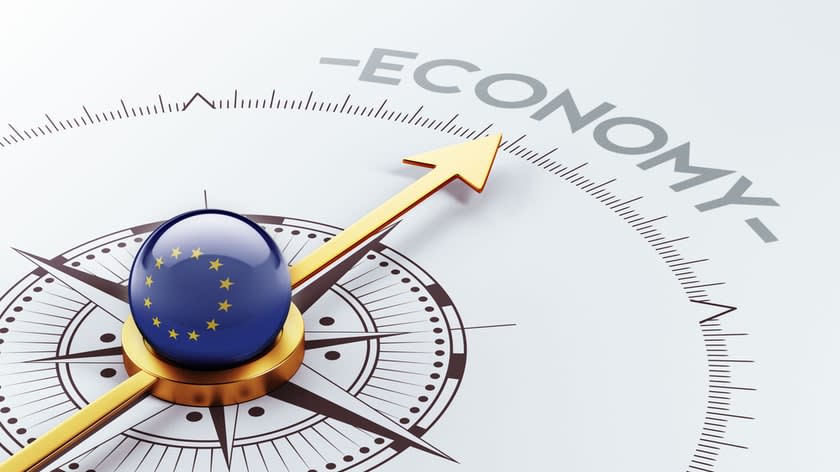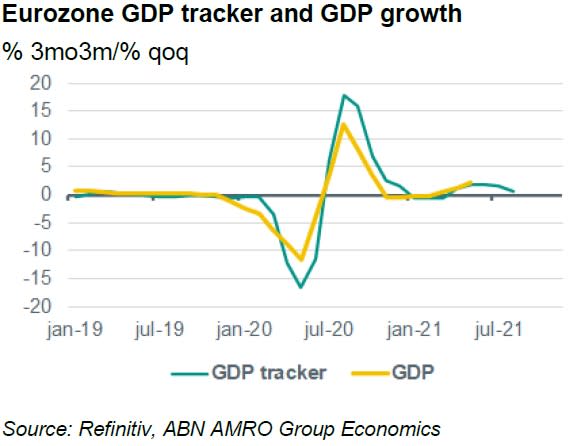Eurozone’s buoyant Q3 to be followed by sharp slowdown, but rates still likely above trend

GDP growth to slow down after strong Q3 - Eurostat will publish the first estimate for Q3 GDP growth on Friday. Another strong growth number of around 2% qoq is expected following the 2.1% qoq expansion that was recorded in Q2.
Indeed, Q3 was the first whole quarter during which growth was not weighed down by any lockdown measures, which ended around mid-May in most individual member states. This implies that there was an upward base effect in quarterly growth in Q3, particularly in private consumption growth and in the production of services. Looking beyond Q3, the evidence has been building that growth will slow down significantly in the final quarter of the year, probably to levels well below 1% qoq. To begin with, the monthly activity data have already slowed down noticeably during the course of Q3. Our GDP growth tracker, which consists of industrial production (manufacturing and construction), retail sales and new car registrations now is consistent with GDP growth of around 0.5% at the end of Q3. We expect the weakness in industrial production (particularly the car industry) to largely persist during the rest of this year, while the volume of retail sales should continue to be weighed down by the rise in (energy price) inflation. Therefore, we expect growth to continue to hover around the current level during the rest of the year (we have pencilled in 0.7% qoq for Q4).For more on the impact of the rise in energy prices inflation on growth, please see our latest Global Monthly – Will the energy squeeze threaten the recovery? here .


Besides the monthly economic activity data, high frequency data, such as the German Bundesbank’s weekly activity index for the German economy and Google mobility data for visits to retail and recreation in the six largest eurozone countries also point in the direction of a significant slowdown in growth in Q4. Indeed, visits to retail and recreation have declined in October, compared to September, which was the first monthly decline since the end of the lockdowns. Finally, survey results, such as the composite PMI, have declined non-stop in every month since July, which also is consistent with slower growth in Q4. Looking further ahead, we expect economic growth to settle at rates of around 0.6-0.7% qoq on average during next year. This is above the trend growth rate of 0.3-0.4% qoq.
